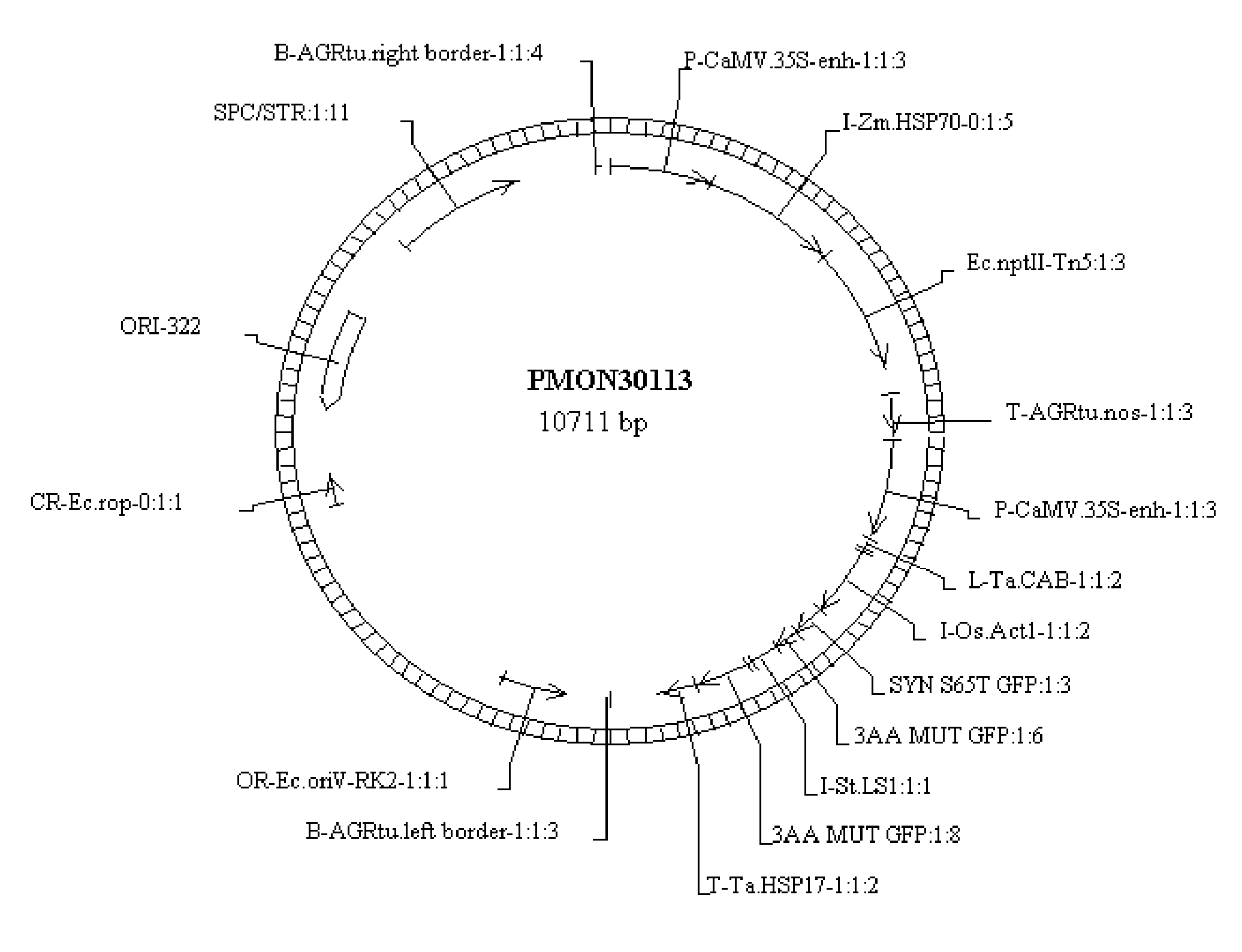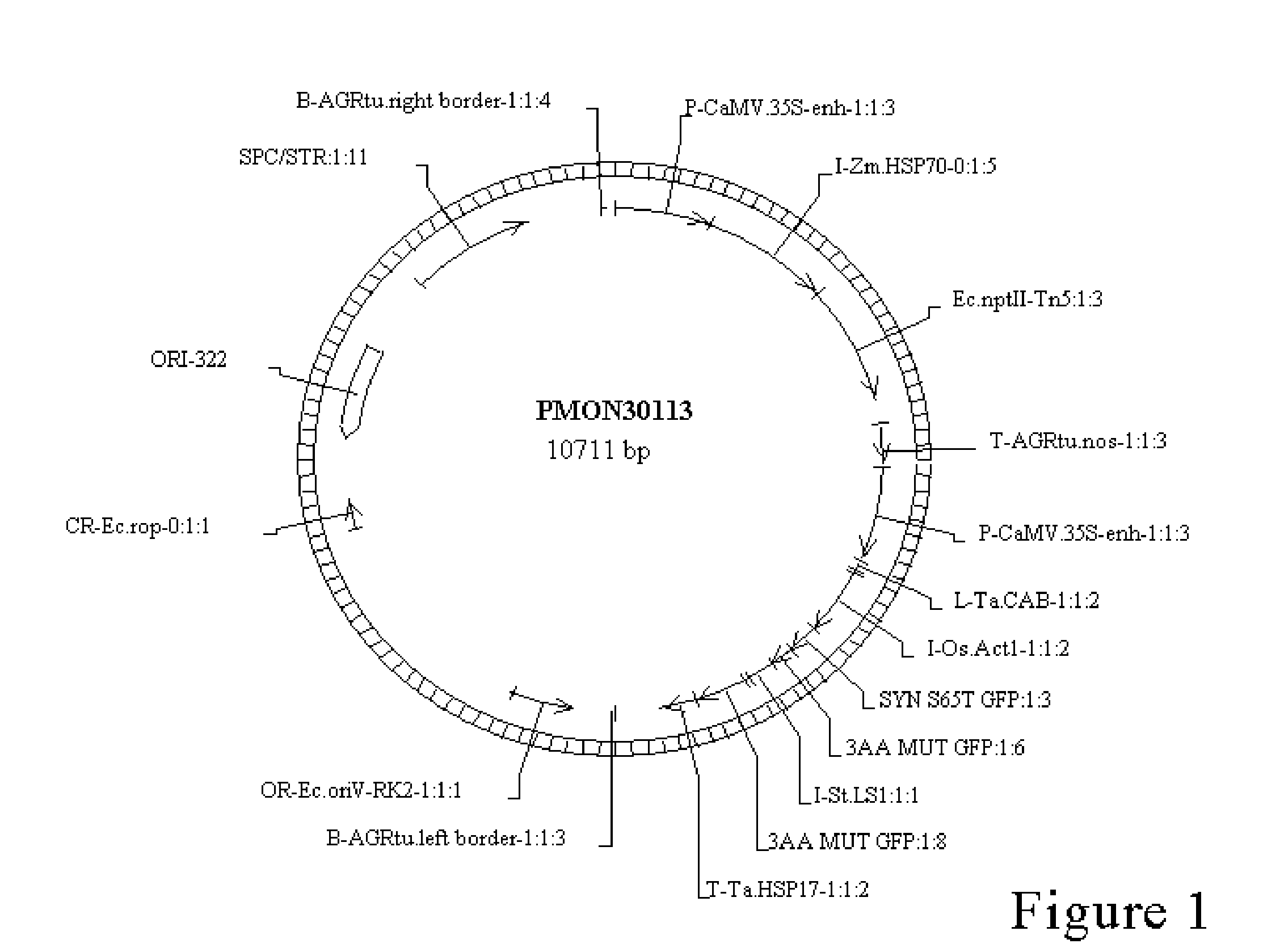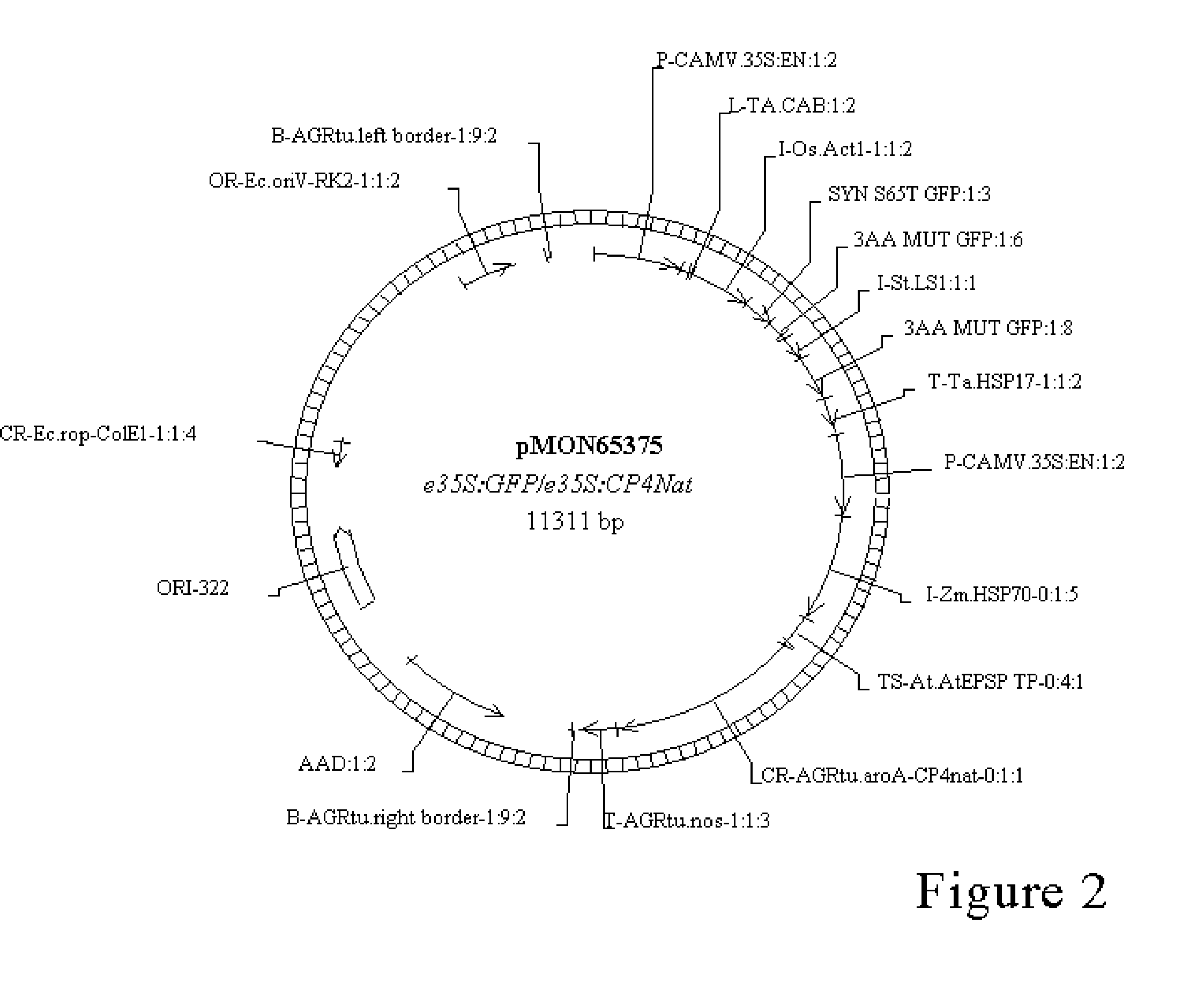A Novel Culture Method for Corn Transformation
a corn culture method and corn technology, applied in the field of corn culture method, can solve the problems of limited flexibility, limited explant selection, and high labor intensity of methods, and achieve the effect of stable and efficient plant transformation
- Summary
- Abstract
- Description
- Claims
- Application Information
AI Technical Summary
Benefits of technology
Problems solved by technology
Method used
Image
Examples
example 1
[0080] Seed Germination
[0081] Seeds of several different corn genotypes were used as initial starting material. Mainly dry or vapor-phase sterilization protocol was used for seed sterilization. Accordingly seeds were kept in a desiccator for 2-24 h with sterilizing gas, which was produced by mixing of 200 mL bleach (5.25 to 6.15% sodium hypochlorite) and 2 mL HCl. Seeds were also sterilized in 50% bleach for 20 min and washed with sterile water three times.
[0082] For germination, the kernels were inserted with the radicle end down into the medium. For germination either MS3 or MS3' solid medium was used (Table 2) (MS3' medium is CM4C Basal Phytagar medium with 1 mg / L BAP, 2.2 mg / L picloram and 100 mg / L ascorbic acid). Seeds were incubated in the light at 28.degree. C. for 7-10 days.
[0083] The effect of media on germination of corn seeds after dry sterilization was studied. Different media typically used for embryogenic or organogenic cultures were tested (see media descriptions in T...
example 2
[0087] Production of Meristematic Cultures and Conversion to Embryogenic Cultures
[0088] Induction of green organogenic culture.
[0089] Seeds were dry sterilized and germinated on MS3 or MS2 medium in a Percival incubator (16-h light and 8-h dark, 27.degree. C.) and 3- to 7-day-old seedlings were used for induction of organogenic cultures. A section (approximately 0.5 cm long) containing the nodal region (with apical meristem and leaf primordia) was dissected longitudinally and laid horizontally on meristem induction medium (MS3) with the wounded surface down. The apical meristem was identified, and the stem piece was completely removed above the apical meristem. If the cuttings were too long, the leaves started to grow and removing and trimming of leaves during culture was required. The plates were incubated with 16 h light photoperiod at 28.degree. C. After 14 days of culture, the leaves were trimmed. The material was cultured for another 10-12 days at the same conditions. Usually a...
example 3
[0099] Direct Induction of Embryogenic Culture
[0100] Most of genotypes listed above have been studied for the direct induction from their seedlings of embryogenic callus. Several media, including MS3, CM4C, CM4C+Ag, CM4C+Ag+ABA, 15AA (0.5 mg / L 2,4-D+2.2 mg / L picloram) were tested for callus induction.
[0101] The effect of different sterilization procedures and different media used for germination on direct induction of callus was analyzed. The nodal area (.about.0.5 cm long) of seedlings was isolated, cut longitudinally and placed on the media with the wounded side down on the callus (embryogenic) induction media. The cultures were incubated at 28.degree. C. with a 16 h light photoperiod. After 3-4 weeks, the explants were subcultured onto fresh medium and incubated in the dark at 28.degree. C. Calli were subcultured onto fresh medium every 3-4 weeks until enough material was produced for transformation.
[0102] It was demonstrated that the frequency of callus induction can depend not ...
PUM
| Property | Measurement | Unit |
|---|---|---|
| concentration | aaaaa | aaaaa |
| concentration | aaaaa | aaaaa |
| concentration | aaaaa | aaaaa |
Abstract
Description
Claims
Application Information
 Login to View More
Login to View More - R&D
- Intellectual Property
- Life Sciences
- Materials
- Tech Scout
- Unparalleled Data Quality
- Higher Quality Content
- 60% Fewer Hallucinations
Browse by: Latest US Patents, China's latest patents, Technical Efficacy Thesaurus, Application Domain, Technology Topic, Popular Technical Reports.
© 2025 PatSnap. All rights reserved.Legal|Privacy policy|Modern Slavery Act Transparency Statement|Sitemap|About US| Contact US: help@patsnap.com



